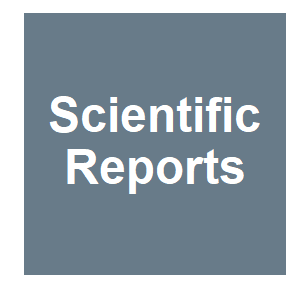
Keywords: daisy drive

|
Daisy-chain gene drives: The role of low cut-rate, resistance mutations, and maternal depositionS. A. N. Verkuijl, M. A. E. Anderson, L. Alphey and M. B. Bonsall, PLOS Genetics, 18:e1010370. 2022.
Author summary Reducing the harm of pest species by the introgression of traits into a wild population is often limited by the difficulties of mass rearing and release of modified individuals. Gene drives present an opportunity to substantially reduce the release frequencies ... Keywords: cleave and rescue, daisy drive, gene drive synthetic, invasive species, resistance, self limiting, self sustaining, squirrel, synthetic homing drive, toxin antidote |

|
Gene-Editing Approach To Control the Invasive Gray SquirrelM. Campbell, Technology Networks, 2021.
Biodiversity refers to the extent of the variety of life that is found on planet Earth – and it is currently under threat. Changes in biodiversity have been flagged as "surpassing safe limits" for several years, and world leaders and scientists across the globe are consequently ... Keywords: cleave and rescue, daisy drive, gene drive synthetic, invasive species, resistance, self limiting, self sustaining, squirrel, synthetic homing drive, toxin antidote |

|
Ecology: Gene drives may help control invasive grey squirrel in the UKA. Korn, EurekaAlert, 2021.
Gene drives introduce genes into a population that have been changed to induce infertility in females, allowing for the control of population size. However, they face technical challenges, such as controlling the spread of altered genes as gene drive individuals mate with wild ... Keywords: cleave and rescue, daisy drive, gene drive synthetic, invasive species, resistance, self limiting, self sustaining, squirrel, synthetic homing drive, toxin antidote |

|
Genetically modified squirrels could curb growing population of greysS. Knapton, Telegraph, 2021.
Mutant grey squirrels, genetically modified to spread infertility genes, could be released into the wild to tackle the burgeoning population, Keywords: cleave and rescue, daisy drive, gene drive synthetic, invasive species, resistance, self limiting, self sustaining, squirrel, synthetic homing drive, toxin antidote |

|
Expert reaction to a paper suggesting that gene drives could be used to help control grey squirrel numbers in the UKAnonymous, Science Media Centre, 2021.
This study assesses the prospects for using a gene drive to control invasive grey squirrels in the UK. This is a modelling study exploring the potential for such an approach – no such gene drives currently exist and developing them for grey squirrels would be quite a long-term ... Keywords: cleave and rescue, daisy drive, gene drive synthetic, invasive species, resistance, self limiting, self sustaining, squirrel, synthetic homing drive, toxin antidote |

|
CRISPR gene drives may come to a squirrel near you.Anonymous, NewsBeezer, 2021.
Today’s gene drive technologies could be blended to provide control of the invasive gray squirrel population in the UK – with minimal risk to other populations, according to a new modeling published in the journal Scientific reports. Gene driving introduces altered genes ... Keywords: cleave and rescue, daisy drive, gene drive synthetic, invasive species, resistance, self limiting, self sustaining, squirrel, synthetic homing drive, toxin antidote |

|
Novel combination of CRISPR-based gene drives eliminates resistance and localises spreadN. R. Faber, G. R. McFarlane, R. C. Gaynor, I. Pocrnic, C. B. A. Whitelaw and G. Gorjanc, Scientific Reports, 11:3719. 2021.
As a case study, we model HD-ClvR in the grey squirrel (Sciurus carolinensis), which is an invasive pest in the UK and responsible for both biodiversity and economic losses. HD-ClvR combats resistance allele formation by combining a homing gene drive with a cleave-and-rescue gene ... Keywords: cleave and rescue, daisy drive, gene drive synthetic, invasive species, resistance, self limiting, self sustaining, squirrel, synthetic homing drive, toxin antidote |

|
Making gene drive biodegradableJ. Zapletal, N. Najmitabrizi, M. Erraguntla, M. A. Lawley, K. M. Myles and Z. N. Adelman, Philosophical Transactions of the Royal Society B: Biological Sciences, 376:20190804. 2020.
Here, we consider the inclusion of self-elimination mechanisms into the design of homing-based gene drive transgenes. This approach not only caused the excision of the gene drive transgene, but also generates a transgene-free allele resistant to further action by the gene drive. ... Keywords: cleave and rescue, daisy drive, gene drive synthetic, invasive species, resistance, self limiting, self sustaining, squirrel, synthetic homing drive, toxin antidote |

|
Gene Drives across engineered fitness valleys: Modeling a design to prevent drive spillover.F. J. H. de Haas and S. Otto, bioRxiv, 2020.10.29.360404. 2020.
We model a proposed drive system that transitions in time from a low threshold drive system (homing-based gene drive) to a high threshold drive system (underdominance) using daisy chain technology. This combination leads to a spatially restricted drive strategy while maintaining ... Keywords: cleave and rescue, daisy drive, gene drive synthetic, invasive species, resistance, self limiting, self sustaining, squirrel, synthetic homing drive, toxin antidote |

|
Novel combination of CRISPR-based gene drives eliminates resistance and localises spreadN. R. Faber, G. R. McFarlane, R. C. Gaynor, I. Pocrnic, C. B. A. Whitelaw and G. Gorjanc, bioRxiv, 2020.
We present HD-ClvR, a novel combination of CRISPR-based gene drives that eliminates resistance and localises spread. As a case study, we model HD-ClvR in the grey squirrel (Sciurus carolinensis), which is an invasive pest in the UK and responsible for both biodiversity and ... Keywords: cleave and rescue, daisy drive, gene drive synthetic, invasive species, resistance, self limiting, self sustaining, squirrel, synthetic homing drive, toxin antidote |

|
Daisyfield gene drive systems harness repeated genomic elements as a generational clock to limit spreadJ. Min, C. Noble, D. Najjar and K. M. Esvelt, bioRxiv, 104877. 2017.
Here we describe a novel form of gene drive based on the introduction of multiple copies of an engineered ‘daisy’ sequence into repeated elements of the genome. Each introduced copy encodes guide RNAs that target one or more engineered loci carrying the CRISPR nuclease gene ... Keywords: cleave and rescue, daisy drive, gene drive synthetic, invasive species, resistance, self limiting, self sustaining, squirrel, synthetic homing drive, toxin antidote |

|
The promise and peril of CRISPR gene drivesZentner, GEW, Michael J. C., Bioessays, 39:1-9. 2017.
Gene drives are selfish genetic elements that use a variety of mechanisms to ensure they are transmitted to subsequent generations at greater than expected frequencies. Synthetic gene drives based on the clustered regularly interspersed palindromic repeats (CRISPR) genome editing ... Keywords: cleave and rescue, daisy drive, gene drive synthetic, invasive species, resistance, self limiting, self sustaining, squirrel, synthetic homing drive, toxin antidote |

Contact
David O’Brochta
Foundation for the
National Institutes of Health
geneconvenevi@fnih.org
RSS

